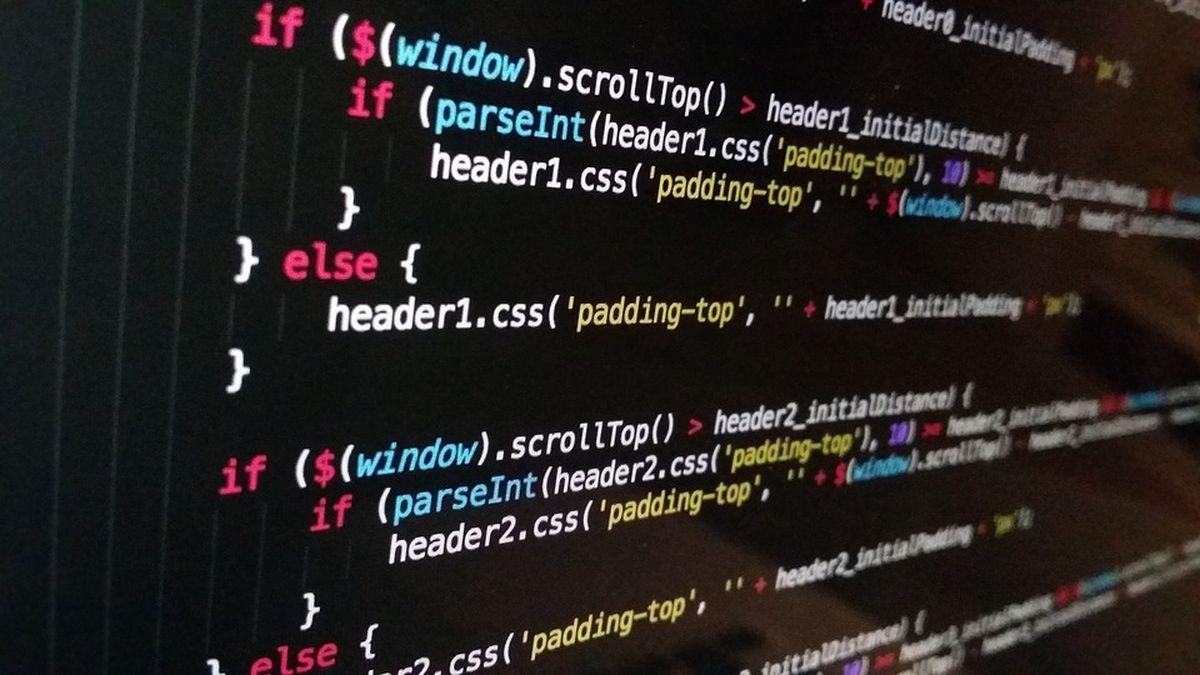Vibe Coding: The AI-Powered Revolution in Software Development
3 Sources
3 Sources
[1]
What is vibe coding, exactly?
When OpenAI cofounder Andrej Karpathy excitedly took to X back in February to post about his new hobby, he probably had no idea he was about to coin a phrase that encapsulated an entire movement steadily gaining momentum across the world. "There's a new kind of coding I call 'vibe coding', where you fully give in to the vibes, embrace exponentials, and forget that the code even exists," he said. "I'm building a project or webapp, but it's not really coding -- I just see stuff, say stuff, run stuff, and copy paste stuff, and it mostly works." If this all sounds very different from poring over lines of code, that's because Karpathy was talking about a particular style of coding with AI assistance. His words struck a chord among software developers and enthusiastic amateurs alike. In the months since, his post has sparked think pieces and impassioned debates across the internet. But what exactly is vibe coding? Who does it benefit, and what's its likely future? To truly understand vibe coding, it's important to note that while the term may be new, the coding technology behind it isn't. For the past few years, general-purpose chatbots like Anthropic's Claude, OpenAI's ChatGPT, and Google DeepMind's Gemini have been getting better at writing code to build software, including games, websites, and apps. But it's the recent advent of specially created AI coding assistants, including Cursor's Chat (previously known as Composer) and GitHub Copilot, that really ushered in vibe coding. These assistants can make real-time predictions about what you're trying to do and offer intuitive suggestions to make it easier than ever to create software, even if you've never written code before. "Over the past three or four years, these AI autocomplete tools have become better and better -- they started off completing single lines of code and can now rewrite an entire file for you, or create new components," says Barron Webster, a software designer at the interface company Sandbar. "The remit of what you can take your hands off the wheel and let the machine do is continually growing over time." But not all AI-assisted coding is vibe coding. To truly vibe-code, you have to be prepared to let the AI fully take control and refrain from checking and directly tweaking the code it generates as you go along -- surrendering to the vibes. In Karpathy's longer post he explained that when he's vibe coding, he breezily accepts all suggestions that Cursor's tool gives him and puts his trust in its ability to fix its own mistakes. "When I get error messages I just copy paste them in with no comment, usually that fixes it," he wrote. "Sometimes the LLMs can't fix a bug so I just work around it or ask for random changes until it goes away."
[2]
Vibe Coding War Gets Ugly | AIM Media House
Vibe coding is now mainstream, with several tools shaping up the space. There's Lovable, Bolt, Windsurf, Cursor, Replit, and Google's newly launched Firebase Studio -- but figuring out which one is right for you remains a challenge. The good news? You don't need to be a professional developer to get started. "If you're a non-technical person, you'll be way ahead of your peers if you pick up a bit of coding and start fiddling with AI-driven coding environments like Cursor, Replit, etc. There's a learning curve for sure. But coding is a superpower!" said Paras Chopra, founder of Lossfunk, in a post on X. Among all the vibe coding tools, Cursor was the first to break out, thanks to its popular 'Tab Tab Tab' feature. Designed for developers in the Visual Studio Code ecosystem, it offers natural language code generation, intelligent autocompletion, and a codebase-aware chatbot. Cursor feels like a smart assistant inside a real IDE. It supports all programming languages, lets you debug and edit code, and reasons through complex tasks. You can upload files, define context, and choose from multiple LLMs. But, Cursor isn't for everyone. While it's powerful, it can feel intimidating for beginners. And with no built-in deployment options, it's less suited for those looking for an end-to-end development experience. To fill in the gaps, many are turning to Replit for a more end-to-end experience. "Many vibe coders are switching from Cursor to Replit because we handle both development and deployment environments. You can also connect Cursor to Replit if you want to use both," said Amjad Masad, founder of Replit, in a post on X. Not to mention, Indian actor and filmmaker Kamal Haasan is a fan of Replit and can't stop raving about it. Recently, LinkedIn co-founder Reid Hoffman used Replit to clone LinkedIn using a single prompt, which was a success. "Vibe coding on the Replit mobile app feels like I'm playing a casual mobile game. It's the exact type of friendly/inviting UX you want to get amateur enthusiasts in the door (i.e., mass consumer trialling)," said Cole Rotman, VC at DST Global. It's not just developers experimenting with Replit anymore. Mohannad Ali shared that an Airbnb property manager built and hosted their full backend on Replit using its agent tools. "Love seeing practical examples in the wild outside of the Twitter vibe coding community," he posted. If you are a non-technical entrepreneur with a killer app idea but zero coding skills. Lovable steps in like a genie, turning your words into a full-stack web app. It is quickly becoming a go-to for kids and beginners exploring app development. "Kids might actually be better at using lovable than adults. Unlimited creativity, no fear. A software dev ran a "create with AI" for 8-12-year-olds. Apparently, kids skipped break because they were vibe-coding too hard, and kept working on their projects after school ended. The future is bright!" said Lovable founder Aston Osika. Its strength lies in a no-code/low-code approach built for people who think in ideas rather than syntax. It also integrates easily with tools like GitHub for version control and Supabase for data management. Lovable simplifies app creation by generating functional skeletons from natural language prompts. It supports frameworks like React and Tailwind and allows seamless API integration with deployment options like Netlify. However, Lovable hasn't disclosed which LLM powers it. Unlike Cursor, it's not a full IDE but a lightweight interface for generating apps. The code isn't editable, so users must build through multiple prompt iterations. Not satisfied with Cursor? Windsurf enters the chat. Forked from VS Code, it retains the layout developers love but comes supercharged with AI that works as both a copilot and an agent. Its standout feature, Cascade, acts more like a collaborative partner than a chatbot. It understands your entire codebase and can edit multiple files, run terminal commands, debug, and even generate new projects from scratch -- all in real time. Windsurf also supports deployment to Netlify and multiple LLMs. With its Wave 7 update, Cascade now supports JetBrains IDEs too, bringing the agentic experience to more dev environments. Most recently, the company announced that OpenAI's latest model, GPT-4.1, will be available for free for one week. Finally, there's Google Firebase Studio, a 2025 newcomer that feels like Google saying, "We've got this." Built for the cloud, it's an AI-powered IDE tightly woven into Firebase's ecosystem. "I feel Google is secretly winning the AI race. They knocked it out of the park with Firebase Studio. It's basically Cursor/Lovable/Bolt/Windsurf all in 1 place," said Aryan Singh, co-founder of a stealth startup and a former software engineer at Google. Firebase Studio is a free browser-based development platform powered by Gemini. It combines Gemini, Genkit, Project IDX, and Firebase to help developers quickly build and deploy AI apps. Users can start with 60+ templates or get help from the App Prototyping agent to design UIS, APIs, and AI workflows. "Firebase Studio looks really good! With two prompts, I was able to create a Tetris app that actually works," said Juan Stoppa, head of development at Wealth Dynamix. Stepping back, each tool tells a story about where coding is headed. Vibe coding is no longer a fringe experiment -- it's quickly becoming the future of app development. Whether you're a kid, a founder, or a seasoned developer, there's now a tool suited to your level, style, and ambition. The only question is, which vibe will you pick?
[3]
Kids in Schools Are Skipping Lunch to Vibe Code | AIM Media House
Vibe coding isn't for the Gen Z developers anymore -- it's a playground viral trend. Kids are getting in on the action and catching the vibe-code fever like their grown-up counterparts. Recently, Lovable founder Anton Osika shared a post on X that said, "Kids might actually be better at using Lovable than adults. Unlimited creativity, no fear." Osika described how a software developer ran a 'Create with AI' session for 8-12-year-olds, where the kids got so deeply engaged that they skipped their break and kept working even after school ended. "The future is bright!" Osika added. In another example, at a recent school session, kids got hands-on with vibe coding using v0. The outcome? A total win. They built 2D games and sleek user interfaces -- all in a stress-free, fun environment that builds future-ready skills. Vibe-coding is also turning out to be a fun child-parent activity. Another user on X posted that he and his nine-year-old son built 3D worlds and interactive games using Replit. "My son went to an escape room. When he came back, he wanted to buy the game. I said, let's build it. And we went cranking. We built this using AI + Replit. It was so much fun," said the user. "Thank you for the tools OpenAI and Replit. So easy getting kids excited about STEM and AI." Zhen Li, creator of Replit agent, shared another example where he built a 3D Pokémon Go with Replit Agent's Gaming stack. "From 3D model generation to complete games -- all through prompting on Replit. Vibe coding these games feels like a glimpse into the future. Imagine how much kids can learn when they code their own games," he said. For kids, though, vibe coding is less about mastering complex programming languages like Python or JavaScript and more about creativity, problem-solving, and storytelling. Instead of writing intricate code, a child could say, "Create a game where a robot collects stars," and an AI tool like Cursor or GitHub Copilot would generate the necessary code, allowing the child to tweak and iterate. The internet has countless examples of kids building their own video games using video coding tools. As AI tools evolve, they need to be included in the school curriculum as well, where children can play around with them. Schools should introduce AI-powered platforms like Cursor, Windsurf, or Replit in elementary curricula. These tools allow kids to start creating from day one, building confidence and excitement. Tristan Rhodes, founder of Cherishable AI, recently participated in an industry advisory board at a university. One of the questions that came up was: When is the right time for university students to start using AI coding tools? AIM spoke to a few high school students who are learning coding in schools. They are familiar with coding through ChatGPT, but haven't adopted any AI tools yet. Pakhi, a CBSE class 9 student in Bengaluru, said they were taught C++ in sixth grade, HTML in seventh grade, and Java in eighth grade. However, she added that it was her father who initially taught her coding, not the school. While she's not aware of the term 'vibe coding', the task that she does at school reflects something similar. "In school, we're using ChatGPT to make websites," she said, adding that AI is now part of their curriculum, and they are being taught and assessed on the subject. However, experiences vary between students. Aarav Mitra, another student, told AIM that their school doesn't teach them how to use ChatGPT, but they are learning learning C++ basics. As AI tools like ChatGPT become more accessible, some believe schools should evolve their curriculum to reflect this shift. "I think there should be a curriculum which encourages vibe coding at different age groups. Like programming fundamentals, we should have something like 'prompting fundamentals'," Krishna Goutham, business consultant, Ideafolk.com, said in a post on X. He further added that kids should start as early as possible, with concepts of software development introduced later. "For university students, I think vibe coding as a curriculum should be introduced in the first year itself," he said. In India, the Central Board of Secondary Education (CBSE) introduced AI as an optional subject for Class 9 students in the 2019-2020 academic year. However, despite the ambitious initiative, its implementation remains inconsistent. Some are worried about the critical thinking aspect. Dr. Abhay Jere, vice chairman of the All India Council for Technical Education (AICTE), who works closely with CBSE to help students and teachers navigate AI tools effectively, says students are already using AI-powered tools like ChatGPT to write essays. "The real challenge is: How do we integrate these tools while still encouraging critical thinking?" Dr Jere asked while speaking at Tredence's flagship event held in Bengaluru last month. The shift is already visible. A Reddit post recounted a father telling his 13-year-old son to skip traditional coding and just vibe code. Another user on X joked that kids dream of being YouTubers today, but as vibe coding tools get better, I think we'll see more of them shifting their focus to becoming software creators. However, vibe coding comes with its challenges. Hence, as kids create more software, schools must focus on the responsible use of AI, with a strong emphasis on data privacy and security. Vibe-coded apps can be vulnerable to hacks if not properly vetted, so schools will need to incorporate cybersecurity education alongside vibe coding. While vibe coding is powerful, schools must ensure that students grasp core programming concepts to avoid over-reliance on AI tools. As Replit CEO Amjad Masad puts it, coding isn't entirely obsolete -- at least not yet. He encourages a strong foundation in programming as a way to build more universal skills. "I would say learn a bit of coding... Learn how to think, how to break down problems... Learn how to communicate clearly, as you would with humans, but also with machines," he said.
Share
Share
Copy Link
Vibe coding, a new AI-assisted approach to software development, is gaining momentum among developers and even children. This trend is reshaping how code is written and learned, with implications for education and the future of programming.

The Rise of Vibe Coding
Vibe coding, a term coined by OpenAI cofounder Andrej Karpathy, has quickly become a buzzword in the software development world. This new approach to coding involves "fully giving in to the vibes, embracing exponentials, and forgetting that the code even exists"
1
. It's a method where developers rely heavily on AI assistance, allowing the AI to take control of the coding process.AI-Powered Coding Assistants
The concept of vibe coding has been made possible by the advent of specialized AI coding assistants. Tools like Cursor's Chat (previously Composer), GitHub Copilot, and others have revolutionized the coding experience
1
. These assistants can predict what developers are trying to achieve and offer intuitive suggestions, making it easier than ever to create software, even for those with little to no coding experience.The Vibe Coding Ecosystem
Several tools are shaping the vibe coding space, each with its unique features:
-
Cursor: Known for its 'Tab Tab Tab' feature, Cursor offers natural language code generation and a codebase-aware chatbot
2
. -
Replit: Provides an end-to-end development experience, handling both development and deployment environments
2
. -
Lovable: Designed for non-technical users, it turns ideas into full-stack web apps using a no-code/low-code approach
2
. -
Windsurf: A fork of VS Code with enhanced AI capabilities, including the Cascade feature that acts as a collaborative partner
2
. -
Google Firebase Studio: A newcomer that integrates AI-powered development with Firebase's ecosystem
2
.
Related Stories
Impact on Education and Young Learners
Vibe coding is not just for professional developers; it's making waves in education as well. Children as young as 8-12 years old are engaging with vibe coding tools, creating games and user interfaces with enthusiasm
3
. This trend is sparking debates about how coding should be taught in schools and when AI tools should be introduced into the curriculum.Challenges and Considerations
While vibe coding offers exciting possibilities, it also raises concerns:
-
Critical thinking: There's a need to balance AI assistance with encouraging problem-solving skills
3
. -
Cybersecurity: As more people create software through vibe coding, there's an increased need for education on data privacy and security
3
. -
Foundational knowledge: While vibe coding simplifies the process, understanding core programming concepts remains important
3
.
As vibe coding continues to evolve, it's clear that it's not just a passing trend but a significant shift in how we approach software development. From professional developers to young students, this AI-powered revolution is reshaping the landscape of coding and software creation.
References
Summarized by
Navi
[1]
Related Stories
Recent Highlights
1
Google launches Gemini 3 Flash as default AI model, delivering speed with Pro-grade reasoning
Technology

2
OpenAI launches GPT Image 1.5 as AI image generator war with Google intensifies
Technology

3
OpenAI launches ChatGPT app store, opening doors for third-party developers to build AI-powered apps
Technology








